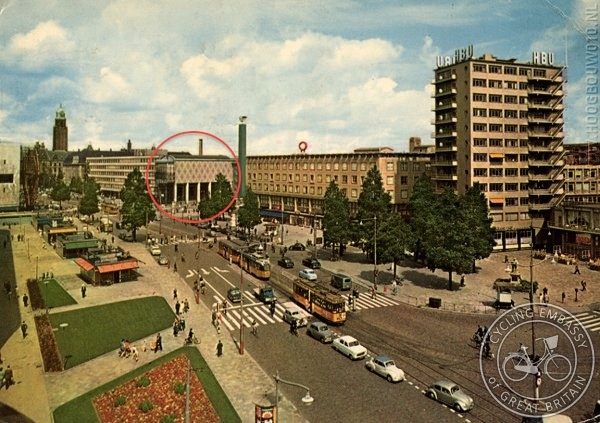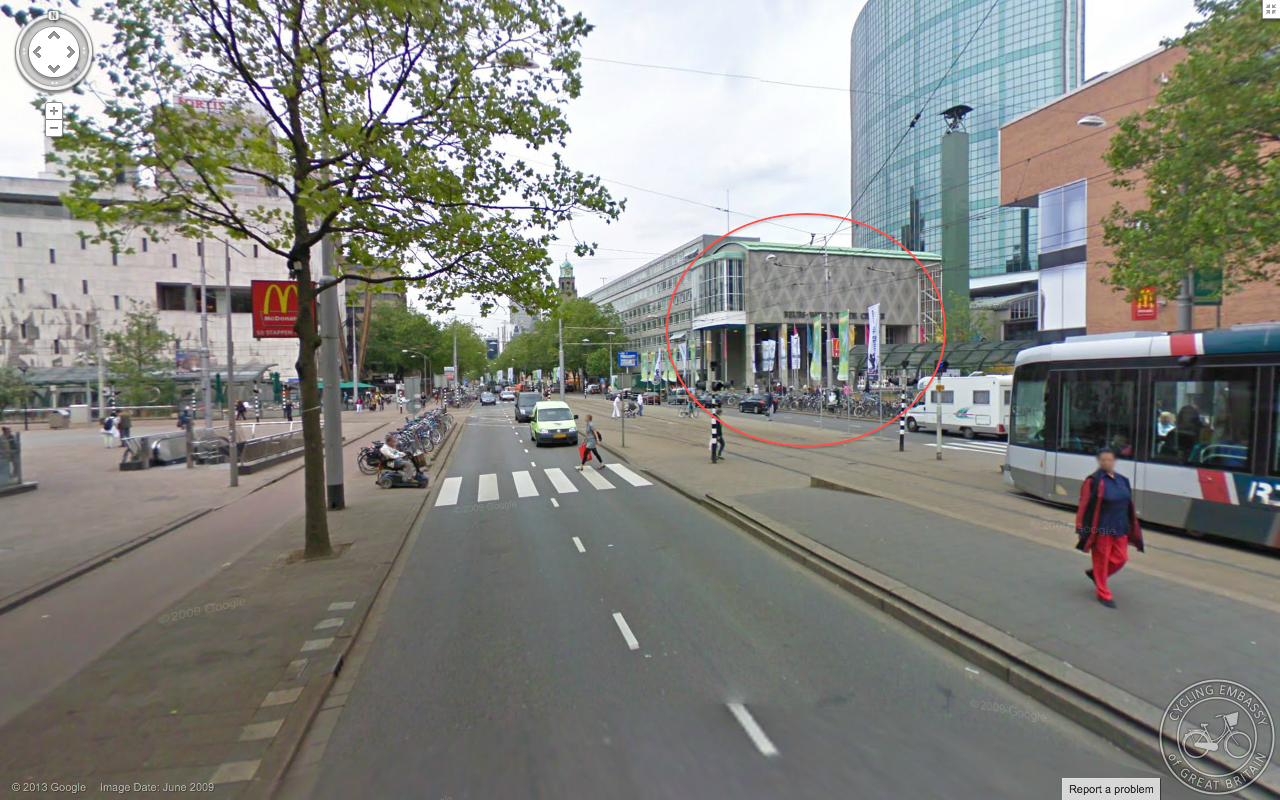Our roads are too narrow for cycle paths
Summary of the claim
The claim that our roads are too narrow for cycle paths is frequently made in response to calls for high-quality Dutch-style infrastructure, here in Great Britain. While it would be wonderful to have wide, Dutch-style cycle paths on our roads, we unfortunately have to deal with the fact that our roads are of a much more restricted width than roads in the Netherlands, where there is the space available to create separated infrastructure.
Example sources
The Mayor of London, Boris Johnson, asked whether he would start to prioritise segregated provision for cyclists on future Cycle Superhighway routes, responded that 'In many places, the existing layout of roads and buildings means that there is simply not enough space to provide segregated cycle lanes without adversely impacting other users.'
The claim is also commonly made on cycle forums whenever the subject of segregated infrastructure arises; for instance on Cyclechat.
Summary of responses
1. In many cases, the claim that there is not the width for cycle paths on our roads is really a claim that the space that currently exists on our roads cannot be reallocated or reassigned for cycle paths (this is the version of the claim made by Boris Johnson). This is, therefore, not an argument about space, but an argument about priorities.
2. Cycle paths do not need to be built on every street, or road (in many ways the claim that are roads are too narrow is a version of the claim that the Cycling Embassy wants cycle paths built everywhere). They are typically only needed where volumes of motor traffic are high and/or where traffic is travelling at a higher speed. These locations usually correspond to roads which do have width available - width assigned to facilitating the flow of motor vehicles.
3. Some of our roads are genuinely narrow, of course, too narrow to practically accommodate cycle paths. But these are roads that are often unlikely to require cycle paths in any case; treatments such as filtered permeability, one-way restrictions for motor vehicles, or restricted access would be more appropriate. Dutch streets are, quite obviously, not universally wider than British streets. In many cases they are just as narrow, if not narrower (see the ancient centres of cities like Utrecht, Groningen or Amsterdam). Here these kinds of measures are in place to ensure that cycling feels subjectively safe, while cycle paths are in evidence on the wider streets.
4. The inability to build cycle paths on those few busy roads that are genuinely narrow (where other measures are more appropriate) is no reason not build them on the roads that can accommodate them.
In more detail
There is no evidence that our roads and streets are any narrower than those in the Netherlands, the country that does allocate space specifically for cycling on those roads and routes that carry large volumes of motor traffic, or motor traffic travelling at higher speeds. No evidence is ever presented when this kind of claim is made.
Sometimes it is asserted that the Dutch have had the opportunity to 'start from scratch', redesigning their streets and roads as a result of development, or as a result of bombing during the war. The London Assembly Member James Cleverly made such an assertion, stating on twitter that Amsterdam (and Copenhagen) 'were leveled in the 1940s and got to rebuild their road layouts from scratch'.
This is factually incorrect - the physical environment of Amsterdam escaped the Second World War almost entirely unscathed. Its city centre streets remain particularly narrow, hemmed in by historic buildings. There was no opportunity for redevelopment.
The streets of central London, which did suffer devestation, and subsequent rebuilding, in the 17th century, are substantially wider - the result of deliberate policy. The reason why it is sometimes believed that there is not the space for cycle paths in London might be because the plentiful space that exists is allocated for other purposes; typically, for motor vehicles, in the form of parking bays, multiple vehicle lanes, and so on. Width on plenty of streets is allocated needlessly to central dividing strips, either hatching markings, or kerbed dividers, designed to keep opposing vehicles streams apart.
One Dutch city did suffer extensive bombing during the Second World War, and had the opportunity to redesign its roads - Rotterdam. However, like British cities devastated by bombing, the city streets were rebuilt for motoring, frequently without cycle tracks.

It has only been subsequent to this rebuilding that concerted efforts have been made to boost Rotterdam's cycling levels, constructing cycle paths and networks that privilege cycling across the city.

By contrast, streets and roads in British cities devastated by bombing, like Plymouth and Coventry, continue to resemble the picture of Rotterdam above; designed entirely for the fast smooth passage of motor vehicles. Euston Road - likewise, bombed during the second world war - was subsequently widened to make space for 'traffic'. The space, just like in Rotterdam, is there; it has not been allocated for bicycles.
The centres of many towns and cities in Great Britain which did not suffer bombing have also been substantially redesigned to accommodate the passage of every increasing numbers of motor vehicles. For example, Horsham has a dualled inner ring road, built in the 1970s and extended in the 1990s. Guildford has a substantial gyratory in its city centre.
Car use, in towns and cities across Britain, has been facilitated and accommodated for the last fifty years, regardless of the constraints of road width that may or may not exist. The issue at hand is not, therefore, one about whether we have the space on those roads and streets for cycle paths, but about what kinds of journeys we want in our towns and cities. This is the essence of Boris Johnson's response to calls for more segregated provision on busier routes; in referring to such a reallocation 'adversely impacting other users', he is implicitly talking about motor vehicle usage. He is not saying that the provision of cycle tracks is a physical impossibility; he is making an argument about priorities. Suggesting our streets are 'too narrow' plays right into the hands of those who wish to maintain the motor vehicle-centric status quo.
Those streets that are genuinely too narrow for cycle paths should still be made subjectively safe for cycling, by reducing vehicles speeds, by measures such as filtered permeability or one-way restrictions for motor vehicles, and so on. These are the treatments applied on the narrow streets of Amsterdam.
In many British cases these will be residential streets, not routes, where cycle paths should not be necessary in any case. Interactions with motor vehicles should be kept to a minimum by means of these other restrictive measures. On routes where motor vehicle movements are harder or impossible to restrict, cycle paths are the appropriate treatment for subjectively safe cycling. These routes will very rarely lack physical space.
